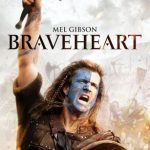Cyborg (1989)

“Cyborg,” released in 1989 and directed by Albert Pyun, is a distinctive film that combines elements of cyberpunk, martial arts, and post-apocalyptic storytelling. Featuring Jean-Claude Van Damme in the lead role as Gibson Rickenbacker, the film presents a gritty vision of a future ravaged by disease and societal collapse. With its unique premise, thrilling action sequences, and exploration of technology and humanity, “Cyborg” has earned a cult following and remains a significant entry in the action genre.
Set in a dystopian future, the narrative unfolds in a world devastated by a deadly plague that has decimated much of the population. Society has crumbled, and lawlessness prevails. Amid this chaos, the last hope for humanity lies in a cyborg named Pearl Prophet, who possesses vital knowledge that could lead to a cure for the disease. Unfortunately, Pearl falls into the hands of a ruthless gang led by the sadistic Fender Tremolo (Vincent Klyn), who seeks to exploit her abilities for his own nefarious purposes.
Gibson Rickenbacker, portrayed by Van Damme, is a skilled mercenary and former soldier with a personal vendetta against Fender and his gang. As the film begins, Gibson is introduced as a lone warrior navigating the desolate landscapes of the East Coast, embodying the archetype of the stoic hero. Van Damme’s physicality and charisma are on full display as he battles the gang’s members, showcasing his impressive martial arts skills and athletic prowess.
The film’s plot accelerates when Gibson becomes entangled in a mission to rescue Pearl and thwart Fender’s plans. Along the way, he encounters a group of survivors, including a resourceful and resilient woman named Nady (Dayle Haddon). Their dynamic adds an emotional layer to the narrative, as Gibson not only fights to save Pearl but also finds a connection with Nady, emphasizing themes of loyalty and sacrifice in a world stripped of hope.
One of the standout features of “Cyborg” is its action choreography. The fight scenes are dynamic and intense, showcasing Van Damme’s martial arts expertise. From brutal hand-to-hand combat to inventive weapon usage, the film delivers high-octane action that keeps viewers engaged. The cinematography captures the raw energy of the fights, with quick cuts and dramatic angles that enhance the sense of urgency. Notably, Van Damme’s iconic split moves and athleticism are prominently featured, solidifying his status as a martial arts icon.
Beyond its action sequences, “Cyborg” delves into deeper philosophical themes, exploring the relationship between humanity and technology. The presence of the cyborg, Pearl, serves as a representation of the merging of human and machine, raising questions about identity, consciousness, and the ethics of technological advancement. As the film progresses, Gibson’s struggle to save Pearl becomes a metaphor for the preservation of humanity in a world increasingly dominated by violence and greed.

The production design of “Cyborg” contributes significantly to its atmospheric world-building. The film features a range of settings, from decaying urban landscapes to desolate beaches, reflecting the harsh realities of the post-apocalyptic environment. The costumes and props further enhance the gritty aesthetic, portraying a society struggling to survive amidst chaos. The visual style is reminiscent of classic cyberpunk films, with its blend of futuristic elements and dystopian decay, creating a unique backdrop for the narrative.

The film’s score, composed by Anthony Francis, complements the action and emotional beats throughout the story. The music enhances the tension during fight sequences while providing a haunting undertone during quieter moments. The sound design effectively immerses viewers in the film’s world, utilizing a mix of atmospheric sounds and intense effects that heighten the overall experience.

Despite its low budget and B-movie aesthetic, “Cyborg” showcases the talent and charisma of its cast, particularly Jean-Claude Van Damme. His portrayal of Gibson Rickenbacker embodies the quintessential action hero, combining strength, vulnerability, and determination. Vincent Klyn’s performance as Fender Tremolo adds a layer of menace to the film, presenting a formidable antagonist whose cruelty drives the conflict. The supporting cast, including Haddon as Nady, contributes to the film’s emotional depth, providing moments of levity and humanity amidst the chaos.

In conclusion, “Cyborg” is a captivating blend of martial arts action and dystopian storytelling. Directed by Albert Pyun and featuring a compelling performance by Jean-Claude Van Damme, the film explores themes of survival, humanity, and the ethical implications of technology in a world on the brink of collapse. Its dynamic fight sequences, thought-provoking narrative, and atmospheric production design have solidified its status as a cult classic in the action genre. “Cyborg” invites viewers to reflect on the nature of humanity and the consequences of a society increasingly defined by its reliance on technology, making it a thought-provoking and entertaining cinematic experience.











